#i'm built for drought not floods
Explore tagged Tumblr posts
Text
today was too overwhelming why did i just tear up thinking about how if dan and phil were born as little tiny mice they would squeak and scurry around and such
#this is what happens when they do too much in one day i'm not built for this#i'm built for drought not floods
11 notes
·
View notes
Text
hey uh so I haven't seen anyone talking about this here yet, but
the amazon river, like the biggest river in the fucking world, in the middle of the amazon fucking rainforest, is currently going through its worst drought since the records began 121 years ago
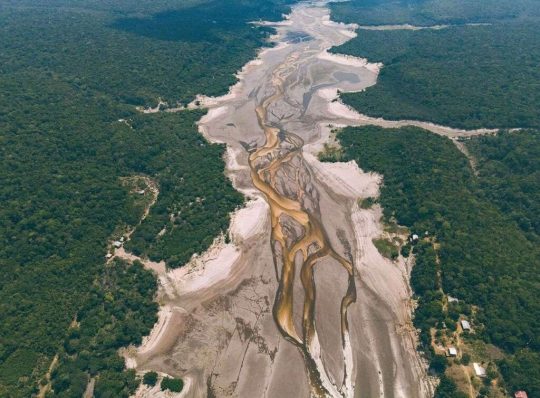
picture from Folha PE
there's a lot going on but I haven't seen much international buzz around this like there was when the forest was on fire (maybe because it's harder to shift the narrative to blame brazil exclusively as if the rest of the world didn't have fault in this) so I wanted to bring this to tumblr's attention
I don't know too many details as I live in the other side of the country and we are suffering from the exact opposite (at least three cyclones this year, honestly have stopped counting - it's unusual for us to get hit by even one - floods, landslides, we have a death toll, people are losing everything to the water), but like, I as a brazilian have literally never seen pictures of the river like this before. every single city in the amazonas state is in a state of emergency as of november 1st.
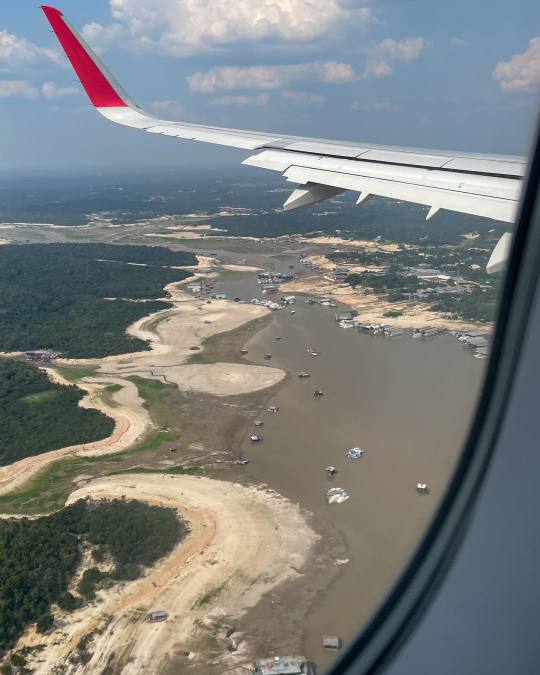

pictures by Adriano Liziero (ig: geopanoramas)
we are used to seeing images of rio negro and solimões, the two main amazon river affluents, in all their grandiose and beauty and seeing these pictures is really fucking chilling. some of our news outlets are saying the solimões has turned to a sand desert... can you imagine this watery sight turning into a desert in the span of a year?
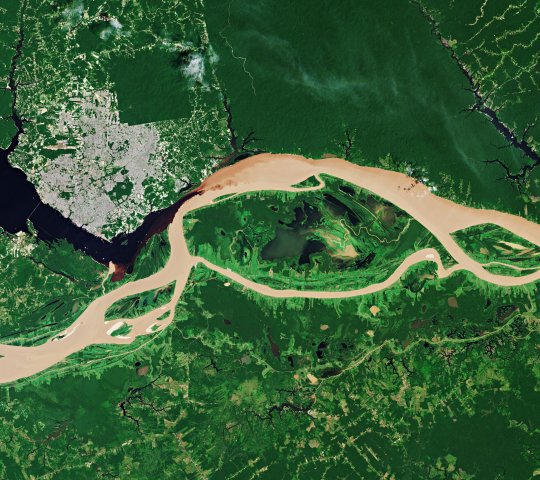
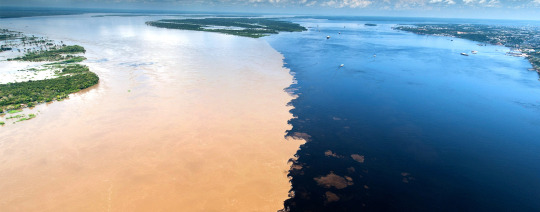
while down south we are seeing amounts of rain and hailstorms the likes of which our infrastructure is simply not built to deal with, up north people who have built everything around the river are at a loss of what to do.
the houses there that are built to float are just on the ground, people who depend on fishing for a living have to walk kilometers to find any fish that are still alive at all, the biodiversity there is at risk, and on an economic level it's hard to grasp how people from the northern states are getting by at all - the main means of transport for ANYTHING in that region is via the river water. this will impact the region for months to come. it doesnt make a lot of sense to build a lot of roads bc it's just better to use the waterway system, everything is built around or floats on the river after all. and like, the water level is so incomprehensibly low the boats are just STUCK. people are having a hard time getting from one place to another - keep in mind the widest parts of the river are over 10 km apart!!
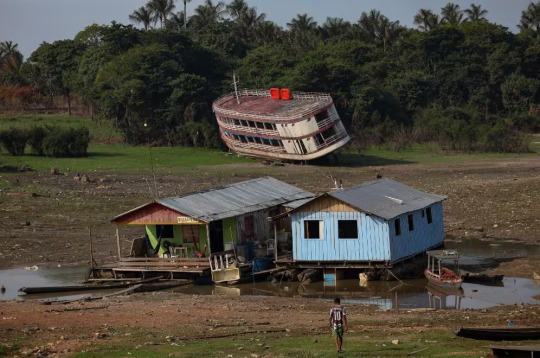
this shit is really serious and i am trying not to think about it because we have a different kind of problem to worry about down south but it's really terrifying when I stop to think about it. you already know the climate crisis is real and the effects are beyond preventable now (we're past global warming, get used to calling it "global boiling"). we'll be switching strategies to damage control from now on and like, this is what it's come to.
I don't like to be alarmist but it's hard not to be alarmed. I'm sorry that I can't end this post with very clear intructions on how people overseas can help, there really isn't much to do except hope the water level rises soon, maybe pray if you believe in something. in that regard we just have to keep pressing for change at a global level; local conditions only would not, COULD NOT be causing this - the amazon river is a CONTINENTAL body of water, it spans across multiple countries. so my advice is spread the word, let your representatives know that you're worried and you want change towards sustainability, degrowth and reduced carbon emissions, support your local NGOs, maybe join a cause, I don't know? I recommend reading on ecological and feminist economics though
however, I know you can help the affected riverine families by donating to organizations dedicated to helping the region. keep in mind a single US dollar, pound or euro is worth over 5x more in our currency so anything you donate at all will certainly help those affected.
FAS - Sustainable Amazon Fundation
Idesam - Sustainable Developent and Preservation Institute of Amazonas
Greenpeace Brasil - I know Greenpeace isn't the best but they're one of the few options I can think of that have a bridge to the international world and they are helping directly
There are a lot of other smaller/local NGOs but I'm not sure how you could donate to them from overseas, I'll leave some of them here anyway:
Projeto Gari
Caritás Brasileira
If you know any other organizations please link them, I'll be sure to reblog though my reach isn't a lot
thank you so much for reading this to the end, don't feel obligated to share but please do if you can! even if you just read up to here it means a lot to me that someone out there knows
also as an afterthought, I wanted to expand on why I think this hasn't made big news yet: because unlike the case of the 2020 forest fires, other countries have to hold themselves accountable when looking at this situation. while in 2020 it was easier to pretend the fires were all our fault and people were talking about taking the amazon away from us like they wouldn't do much worse. global superpowers have no more forests to speak of so I guess they've been eyeing what latin america still has. so like this bit of the post is just to say if you're thinking of saying anything of the sort, maybe think of what your own country has done to contribute to this instead of blaming brazil exclusively and saying the amazon should be protected by force or whatever
#solarpunk#sustainability#environmentalism#climate change#climate crisis#global warming#amazon rainforest#amazon river#geography#brazil#degrowth#punk#global boiling#ecopunk#anti capitalism#climate action#climate activism#the world does not die on my watch#i saw someone use that tag and uh i like it we should make it a thing#long post#:/ sorry i know no one likes lengthy bad news posts on their dashes but i've been thinking about this quite a bit#and i don't really know what to do to help bc i don't have money to donate and i am 10 thousand km away#i think i could be doing more to help but i am already trying my best#again dont feel obligated to share or read this but it would be nice and i would love you forever#have removed lbv from the post
7K notes
·
View notes
Text
The Land Before Time Liveblog 4
The Land Before Time IV: Journey Through The Mists
Last Time: The Gang must have done something to piss off Dino-God, because the Great Valley (which is supposed to be a paradise) had 6 natural disasters, all in a row: earthquake, meteor shower, drought, famine, wildfire, and a flood. This cavalcade of natural disasters taught everyone an important lesson about bullying.
This Time: You know, I've actually never seen this one. My memories of 1 were pretty clear. 2 and 3 were fuzzy, but I had seen them before. I'm completely unfamiliar with 4. I'm curious to see what happens.
The Universal Logo is still not Pangaea.
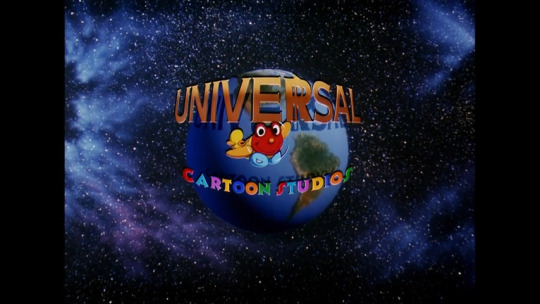
We open on a slightly shorter narrator spiel this time, still introducing the concept of dinosaurs to the audience in movie 4 of a franchise about dinosaurs. The plot-relevant part happens near the end of the speech:
Narrator: "But the realm of the dinosaur was changing. The weather, the plants, and the animals were beginning to transform." *a gigantic rainstorm starts up* "Still, despite the changes happening in the outside world, life in the Great Valley remained the same."

This tracking shot is probably the best aerial view we've ever gotten of the Great Valley. And it's basically the generic fantasy isekai circular walled city with a river running through it.

I will NEVER be able to unsee that now.
Also "remained the same"? I guess we've recovered from the giant wildfire that left everyone with a limited amount of green food to eat, then? That was quick.
The movie begins proper with our regular reminder that Dinosaurs are Built Different.
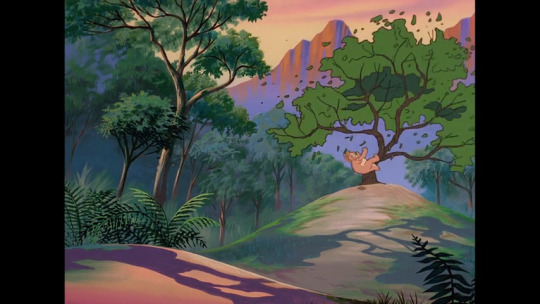
Cera charges and headbutts this tree and bounces off it, but she also knocks down ALL of the leaves! Every single one! That's good progress, considering she tried headbutting a similar tree in the first movie and didn't knock any down, Littlefoot had to humor her by throwing down some leaves. Also probably not very good for the tree.
Ducky and Petrie join her to eat, but Spike is already in the leaf pile, chowing down. Meanwhile, Littlefoot chases a dragonfly through a small hole in the Great Wall to a ledge, and on the other side he sees a herd of Longnecks walking toward the Great Valley.

Interesting visual callback to the first movie, with the Longneck shadows being similar to Littlefoot's shadow he mistook for his mom. Also, Littlefoot is more pink in this movie, like in the first one. In 2 and 3 he was more brown.
Also, what is this, the third hole in the Great Wall so far? First was the one they entered from in the first movie, second was the one in the third movie they used to find the water, now this one. They made a fourth one in the second movie, but they filled that one in, so I don't count it. Still, the Great Wall isn't nearly as airtight as it's hyped up to be. And the adult herbivores can come and go as they please by just walking up and down some stone ramps, as we saw last movie.
The rest of The Gang join Littlefoot and discuss the herd briefly. Littlefoot goes to tell his grandparents, who are washing their heads in a waterfall. They already know about the herd of Longnecks, and Grandma starts licking Littlefoot to make him clean and presentable for them. They are a migrating herd, and Littlefoot's "cousins".
As they start to leave, however, Grandpa feels faint and leans against a wall.
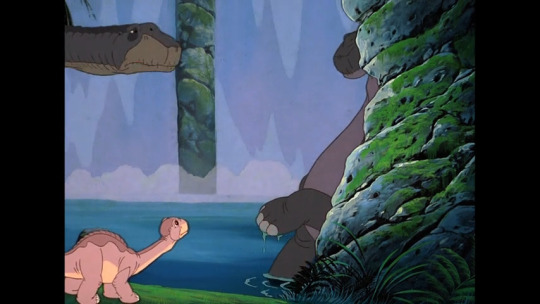
He recovers quickly and says that he's fine. Littlefoot brushes it off but Grandma stays concerned until he insists he's okay.
I'm sure this is relevant to something in this movie, but I'm honestly surprised this hasn't happened sooner. In the last two movies, Grandpa did a lot of running around and fighting. Hell, he did the MOST Sharptooth fighting in both movies! He fell down a cliff! Supposedly, he's an old man, but this is the first time we've seen age affecting either him or Grandma.
The other Longnecks arrive in the Valley and their leader, a female elder just called "Old One", questions Littlefoot's grandparents about the climate and land. They're confused but answer that everything's fine here. Old One comments that could change soon, and Cera makes fun of her. Old One says that things are changing everywhere. For some reason, this really sets off the crowd of dinosaurs that have gathered, they all gasp and whisper in hushed tones about "changes".
Littlefoot's Grandma: "Old One, are you saying changes will happen here, too?"
Old One: "I don't know. All I do know is that once, our land was just like yours." *flashback* "Then, water fell from the sky for weeks on-end. Our land grew wet and soggy. Strange creatures began to make their home on what was once dry land. Other creatures moved into the trees that were our source of food. The once green land we had migrated across for years had become... the Land of Mists."
The "strange creature" in question:

That is a Deinosuchus. A giant relative of modern alligators, averaging 30 feet in length. The "other creatures" mentioned to be in the trees are just shown as some eyes, kept in mystery.
Elder: "We had no choice but to leave."
Littlefoot's Grandma: "Does this mean that you and your herd will be staying with us, Old One?"
Old One: "We stay in no place very long. You and the other Great Valley Longnecks may join us when we leave. After all, there is safety in numbers."
Littlefoot is concerned about migrating, but Grandpa says they won't. The Gang are relieved to hear Littlefoot won't be leaving because they would miss him. Cera is too cool to admit it, though, so she makes them chase her to find out. While chasing, Littlefoot loses track of Cera and then gets messed with by a new giggling girl.

After some shenanigans, they meet properly. This is Ali. Elsewhere, Petrie and Ducky have cornered Cera in a bush with two sticks and then Spike exposes her by eating the bush. She admits that she'd miss Littlefoot.
Ducky: "Hey, look! There are two Littlefoots!... Feets?"
The Gang realize that Ali is a girl, not another Littlefoot. Not sure how they can tell by appearance alone, she looks exactly the same, just slightly darker pink. They even have the same eyelashes, which is usually cartoon shorthand for "girl".
The Gang all introduce themselves. Ducky's line is interesting, this is the first acknowledgement in the series that Spike not talking has gone past the point of being justified by his age, and thus now needs to be justified some other way:
Ducky: "And I am Ducky. And this is my brother Spike."
Spike: "Heeh."
Ducky: "He cannot talk like us, oh no." *Spike nods* "But he still says hello!"
So, first confirmation in-series that Spike is mute, not just too young to talk. He definitely understands language, he reacts to the things people say. But he just can't talk. I remember Spike being one of my first exposures to mentally disabled representation in media. While I'm not mute myself, I am Autistic and I have interacted with non-verbal people in various special needs programs. I always liked Spike's portrayal, and I still like it today.
But Ali is not that enthusiastic to meet them. In fact, she's scared. Petrie jokes about being scary and puffs himself up. This is also a behavior we've seen from him in previous films, he asked Chomper to teach him how to be scary and tried to puff himself up against the bullies. Petrie's got a bit of a complex regarding his height. But then Cera joins in acting scary and Ali is so frightened she hides under Littlefoot.

Littlefoot scolds Cera, then tries to reassure Ali that his friends are actually nice. She whispers to him that they're not Longnecks like we are, then excuses herself and runs away.
Interesting! After Cera's father's character development last movie, I was worried we'd toppled the load-bearing pillar of the racism theme, and that would just stop being a theme altogether from now on in this franchise. But nope, here's Ali (and presumably the other Longnecks in the migrating herd who taught her this) to keep it going, at least for this movie.
Cera: "Humph! She's not scared! She's stuck-up! Who needs her?! Come on!"
I think that's a little bit of a misread, but it's not entirely wrong. The rest of The Gang decides to leave, but Littlefoot hesitates. Turns out, Ali didn't actually leave. She whispers to him, hiding behind a nearby tree. He asks her if she changed her mind, but she looks down, sullen. Ali then decides to lighten the mood by making a bunch of silly faces.

I don't know if these faces are all that great, but they make Littlefoot ROFL, so I guess they worked. The Gang hears Littlefoot laughing and looks back to see them.
Cera: "If Littlefoot would rather play with her, than he's not our friend!"
Petrie and Ducky: "What?!"
Wow, that's a big switch-up for little miss "Littlefoot will always be my friend" from last movie. Despite their objections, The Gang leaves.
Later, Littlefoot and Ali are playing in a pond and Littlefoot realizes that he left his other friends behind. He looks for them, but it's getting late and it's time to go to bed anyway. The two return to the Longneck herd to find Littlefoot's grandpa collapsed on the ground.

As an aside, I think this scene is the first time in the franchise the characters have spoken the word "dinosaur".
Old One has seen this before. He's got a fever, and the only prescription is More Cow Bell eating the Golden Petals of the Night Flower. The only place to find it is in The Land of Mists.
Grandma's ready to go, but none of the Longneck herd are willing to accompany her and leave. Ali wants to help out, but her mother takes her away. Then, Grandpa wakes up and makes Littlefoot promise that if something happens to him, he and Grandma will leave with the migrating herd. Grandma tells Littlefoot to go to bed and she sings song 1 of the movie, Grandma's Lullaby.
youtube
And, uh, if you don't want to watch the entire proceeding scene, skip to 3:20 in the video.
This song is great. Like, it gets a little repetitive at points, but that's one of my only critiques. It really breaks down what the Circle of Life means as a metaphor, the visuals showing parents and children of all different types of life are really poignant (I especially love the spiderlings ballooning away), the melody is good, the flow is interesting at points, and the thematic imagery of the lyrics is really evocative.
And I REALLY love how it ends with Grandma weeping. It shows that she's not just singing this song to reassure Littlefoot, but also herself. This is one of my favorite songs in the franchise so far.
That said... I do have another critique. Not just of the song, but of this scene as a whole. And that's that there's no acknowledgement whatsoever that Littlefoot's mom died in the first movie, this is the second time he's going through something like this. None of the sequels have even mentioned her so far, but not mentioning her here feels ESPECIALLY egregious.
Anyway, back to the movie, Littlefoot can't sleep. And he decides to sneak off to find the Night Flower. Littlefoot wakes up Ali and asks her to tell him the way to The Land of Mists. She doesn't want to tell him because it's too dangerous to go alone. Littlefoot is planning to go with The Gang, but he wasn't planning to bring her since she doesn't like them. Ali will go with him, but on the condition that he doesn't bring The Gang because "they'll slow us down". Littlefoot hesitates, but Ali takes the decision out of his hands by insisting that she knows the way, not them, and they have to leave right now. The two run off.
Next day, Petrie and Ducky are exhausted from looking for Littlefoot.
Cera: "Oh, he's probably just hiding from us so he can play with that dumb ol' Ali. Oh, LiTtLeFoOt, i'M aFrAiD! YoUr FrIeNdS aRe SOOO sCaRy! KeEp ThEm AwAy, kEeP tHeM aWaAaAaY!"
The other kids crack up laughing. But when they hear Littlefoot's grandma calling out for him, they realize the situation is serious. But Grandma knows her grandkid, she's afraid he went to go find the Night Flower.
Meanwhile with the Longneck kids, they're trudging through a desert and Ali reveals that she only sorta knows where they're going because her herd moves around so much she forgets where she's been. But Littlefoot doesn't really have a choice, so they keep moving on. The two eventually reach a waterfall with a double rainbow.

THIS is a memorable landmark, for sure! Ali remembers the way now, it's through that cave next to the waterfall. But there's deep water in the cave that Ali's mom carried her over before, so Littlefoot suggests they explore the cave for another way. The two Longnecks don't know they're being watched by the Deinosuchus we saw earlier and...

A BIRD?! A BIRD. THAT'S A BIRD! UH, HEY MOVIE, I know you're from 1996, but birds evolved from dinosaurs, they didn't really co-exist at the same time!
What does Wikipedia have to say about this?... Oh. Well, then. Egg on my face. Apparently, that's an Ichthyornis and they actually did exist in the time of the dinosaurs, approximately 30 million years before the meteor hit. The exact time period isn't that significant, most of The Gang's species didn't coexist at the same time anyway.
Ichthyornis looked like this:
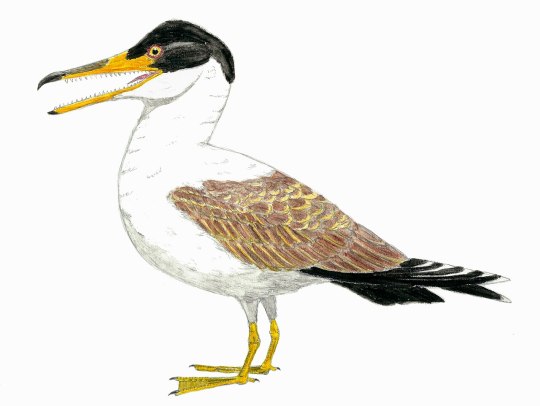
That's REALLY close to what's depicted in the movie. Okay then.
Once again, I'm pleasantly surprised by the prehistorical accuracy these 90s direct-to-VHS kids movies have. I really just assumed they half-assed these sequels more than they actually did.
I guess this is what they meant by "changes". The meteor theory wasn't widely accepted in the 90s, so the prevailing theory for the extinction of the dinosaurs was just that the weather got real fucky for no reason and they couldn't keep up, and I guess that's what this movie is hinting at. That's simultaneously really dark and really funny, since we've got 10 more sequels to go, we can't have the apocalypse just yet.
The two Longnecks reach a cliff in a wide open part of the cave.
Littlefoot: "Iii... think we'd better go back!"
Echo: "Go back, go back, go back, go back..."
Ali: "What was that?"
Littlefoot: "I don't know, but I think he wants us to go. WHO ARE YOU?"
Echo: "Who are you, who are you, who are you..."
Littlefoot: *gulp* "I'M LITTLEFOOT!"
Echo: "I'm Littlefoot, I'm Littlefoot, I'm Littlefoot..."
Ali: "You can't be down there if you're up here, can you?"
Littlefoot: "I don't think so."
This is a funny scene, kids getting confused by echoes. Especially the Ali line at the end, that was like a modern-day surrealist internet punchline.
All this yelling triggers an Earthshake and tons of stalactites fall! The kids run for their lives but a wall of rocks comes down between them and Littlefoot is trapped in the cave. Ali decides to run for help.
Back at the Great Valley, Grandma explains the situation to The Gang. Cera still thinks he might be playing with "what's her name", but Grandma retorts that Ali's missing too, they're probably both out searching for the Night Flower. Ducky offers to go find them, and Grandma orders them to promise her they won't go. All four of them "promise" while crossing fingers behind their backs (well, Petrie and Ducky cross their fingers, Cera and Spike just cross one back leg over the other).
After The Gang leave, Cera starts ranting.
Cera: "The more I think about it, the madder I get! Littlefoot should've asked us to go with him, but nooooo, he wanted to go alone with his new friend!"
Petrie: "Yes, his new friend!"
Ducky: "Maybe Littlefoot thought we would not want to go? Maybe."
Cera: "HAH! Well, maybe I changed my mind! Maybe I don't wanna go after Littlefoot after all!"
Ducky: *gasp* "Cera!"
Cera: "Ooh, besides, who even knows where that dumb ol' Land of Mists is anyway? I'm sure the grown-ups aren't gonna tell us!"
Cera's clearly having a hard time grappling with the feeling of jealousy, she's flip-flopping on what she even wants. Petrie's just been mindlessly parroting what Cera says about Ali, he's turning into Nod. And Ducky, as the oldest and the big sister of the group, always tries to keep the peace, but that only inspires Cera to rant harder.
Then Ali arrives through some tall grass, yelling their names. Cera demands to know where Littlefoot is, but that scares Ali and she can't explain clearly, so she just rambles something about a cave-in and tells them to come with her. The others are ready to go, but Cera thinks she made the story up, putting them at an impasse. Ducky asks Spike what he thinks, and he gives Ali this great intense glare of skepticism.

After a few seconds of mental deliberation, he decides to go with her and that's good enough for Ducky and Petrie. Not for Cera, though. She just yells "OOOOOO" a few times and turns her back to pout.
Back with Littlefoot, after failing to clear the rocks and call for help, he decides to find another exit. In a room with skylights, he's stalked from behind and taken by surprise by this old turtle guy named Archie, who immediately loses all intimidation factor.

Archie is an Archelon, from the same minds that brought you Hyp, Mutt, and Nod. The sequels may not half-ass the research, but they do half-ass the names. He was actually trying to scare Littlefoot to keep him on his toes, since the cave is dangerous. Weird.
Ali leads Ducky, Petrie, and Spike to the waterfall, which has been downgraded from two ranbows to one. On the other side of the wall, Littlefoot gets Archie to help moving the rocks.
And now we're finally, properly, introduced to our villains for the movie, who've been lurking in the background for so long. Dil is a female Deinosuchus, and Ichy is a male Ichthyornis. They immediately jump into singing song 2 of this movie, Who Needs You.
youtube
Okay, this song kinda rules? It's styled like a classic Broadway argument song (reminiscent of Anything You Can Do, I Can Do Better), and it's really fast-paced. The lyrics are really fun, creative, and surprisingly edgy at points. The flow is immaculate, and some of the back-and-forth burns are actually sick. And the character animation, especially on Dil, is great. And yes, that is Tress McNeille playing Dil, AKA Dot Warner, Babs Bunny, and the modern Daisy Duck. Apparently she was in the last two movies, too (as Ducky's mom), but I didn't even notice. This is her in her element.
This is definitely the best villain song so far, it's way better than Eggs and When You're Big (and Standing Tough if we count that). It's structurally similar to Eggs, but the two villains are actually bouncing off each other in a genuinely entertaining way. So far, this movie is 2 for 2 on great songs.
I also like how these two demonstrate a real phenomenon in nature. They're clearly referencing the (apparently fake?!?!?!) reports of crocodiles with teeth-cleaning plover birds, but their actual relationship is closer to that of wolves and ravens, where the bird leads the large predator to prey, the large predator takes it down, and then shares the carcass with the bird. That doesn't quite make sense, crocodiles are ambush predators, not pursuit predators, but whatever.
I wish these two were in the movie more. I wish we had seen them interact before now, at the halfway point of the film. This song is fantastic in isolation, but I don't know how well it works as an introduction. I think it would have been better if we had a little more set-up before they do a big break-up song. Maybe the writers didn't have confidence in these two as interesting villains since they're not dinosaurs.
After the song, Ichy spots Littlefoot and Archie pushing rocks, and he calls Dil back over. Littlefoot and Archie actually manage to push a large boulder, but it's barely a scratch on the giant cave-in wall.

Littlefoot then hears his friends on the other side, trying to dig him out from their end. Spike dislodges a keystone rock and triggers a small rockslide, which Littlefoot hears on the other side. He's worried for his friends, but then Ichy flies in, leading Dil to them. Littlefoot and Archie run past her, and Littlefoot hides in a crevice while Archie tucks into his shell in a nearby pool. Dil walks right past them, and Ichy redirects her to Littlefoot's hiding spot, but her mouth is too small to fit, so she starts tail-whipping the surrounding wall.
Dil's tail whips actually crack the wall and make stalactites fall. On the other side of the cave-in, the other kids can feel the earth shaking from her tail whips and hear her roaring. The kids are worried for Littlefoot, but then Cera shows up and explodes a rock with a headbutt. The Gang works together to really clear the rocks, and Ali wants to help, but Cera just tells her to stay out of her way.
Dil manages to break the wall with her tail and reach Littlefoot, but before she can bite down, Archie steps in her way. She slaps him down and then tail whips. But before her tail hits, Littlefoot hops on Archie, and Dil's tail whip launches Archie in his shell like a hockey puck. They chase after, but on the other side, Cera rears back and charges for one mighty headbutt and HOLY SHIT!

CERA, WHAT THE HELL!!! Exploding one rock is one thing, but exploding an entire WALL of rocks is INSANE! I can't believe the power-scaling has only gotten CRAZIER in this franchise, Cera is legit strong enough to fight some Marvel Superheroes at this point! And remember, she's like 2 feet long and Dil is 30 feet long.
One of the bigger rocks from this blast falls on Dil's head, knocking both her and Ichy out cold! Those are big rocks! Seriously, someone add this to Cera's vs battle wiki page, this is a crazy feat.
Littlefoot climbs up the wall to the hole Cera made and reunites with The Gang. He thanks Ali for going to get them, and there's a neat moment, completely free of dialogue, where it looks like she's starting to warm up to them, but then she looks down, Cera looks mad, and Littlefoot sighs in disappointment.
Archie: "Hello! We gotta get moving before that Big-Mouth Belly-Dragger and her Sharp-Beaked Friend wake up!"
Ducky, Petrie, and Ali: "Who's he?"
Littlefoot: "I'll explain later. Now, come on!"
In another room, Littlefoot explains what happened to The Gang. Cera takes full credit for the save, and says that he should have asked his real friends to help him find the Night Flower. Archie asks what's up, and Littlefoot explains the situation with his grandpa. Archie leads them through a shortcut to the Land of Mist. He tells them to stick together from now on (Cera just says "humph" at Ali in response), and says goodbye.
The kids exit the cave, and we get our first look at the Land of Mist Valley of Mists.

Not sure why they changed the name, but it looks cool. The kids descend and Ali warns them not to get lost. Cera takes point until a salamander walks across her feet and she runs in a panic, immediately getting lost.
The mist clears only for the kids to have to take cover from a huge pack of Stuthiomimuses (same exact design as Ozzy and Strut), then they get caught in the middle of two Pachycephalosauruses dueling (we saw those in the first movie). Then it starts raining and the kids (minus Cera) take shelter under a tree. A tree full of MICE! One falls out and lands on Spike, and the kids scream and avoid it as it runs for cover in a flowerbed.
Spike recognizes what went over the other kid's heads, that mouse was just as scared as they were. He goes over to it and makes friends with it.

It hugs Ducky and she names it "Tickles", because of its ticklish fur. Littlefoot asks Tickles if it's seen Cera, and it climbs a tree to show Petrie which direction she is.
Cera is curled up on a ledge over a river. They call out to her and she looks up to see Petrie, but then the ledge collapses and she falls in the rushing river. Ducky throws her a vine and the kids try to pull her out, but then Dil and Ichy show up (thanking them for showing them the shortcut) and Ichy bites the vine to break it.
The Gang throws a hail of small rocks down at Dil and Ichy while Ali decides that she's gonna be the hero this time! She's gonna save Cera! Littlefoot warns her the riverbank wall is too steep, but she's got thi-

Ali immediately trips, tumbles down the wall, and gets knocked out. Ichy then diverts Dil to target her.
Ali does manage to wake up just in time to dodge a swoop from Ichy straight into that tree behind her. She then jumps on Dil's back and despite Dil bucking and swerving to get her off, Cera manages to grab onto Ali's tail and then both of them jump off Dil's back when she collides with that same tree. Dil and Ichy start arguing while Cera thanks Ali and reassures The Gang that they're friends now.
As the kids walk, Ali explains that she never knew anyone besides other Longnecks, but now she understands that diversity is important. She then sings song 3: It Takes All Sorts.
youtube
It's pretty decent. Better than just okay, but not as good as the other two songs here. It's definitely the most overt anti-racism, pro-diversity song so far in this series. It's a good message, but a good message cannot carry a song on its own. The wordplay of the verses is kinda clever at points, but aside from that, it's really repetitive.
And unlike Grandma's Lullaby, the animation doesn't demonstrate the message at all. It would be more effective if they were constantly running into small obstacles during the song that require The Gang's unique and diverse talents to deal with. Like a rock for Cera to break, splitting paths for Petrie to fly over and tell them which way to go, a water section for Ducky, etc.
Back with Dil and Ichy, Dil bites Ichy out of the tree he embedded himself in, scaring the hell out of him. The animators must have died laughing at this frame, because they hold on it for like 5 seconds.
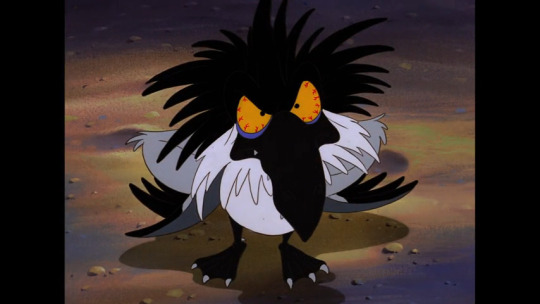
It is pretty good.
Hours later, they're still searching for the kids and they're tired. Ichy decides to get some shut-eye while Dil keeps searching, despite her poor eyesight. Without him to play look-out, Dil sleepily runs into tree after tree.
The Gang are also still walking, looking for the Night Flowers. Ali admits that she's never actually seen them before, so she's not exactly sure what to look for. The Gang decide they're tired and go to sleep in a field of buds. Wait, buds?
The clouds expose the moon and the buds open!

Who would have guessed the Night Flowers would bloom at night? Thankfully, Spike wakes up, and his reaction when he realizes what he's looking at is GREAT.

Spike wakes up Ducky and then she wakes up everyone else. The Gang celebrate that they found the flowers they were looking for and can save Littlefoot's Grandpa. They carry a bouquet of Night Flowers on Spike's back, Tickles and Ducky holding them steady.
But then Ichy jumps out and calls Dil over. The kids scream and run, hiding behind a boulder. But Ichy deduces that's where they're hiding and he flies over and grabs Petrie! Dil wants to eat, but Ichy pulls Petrie out of the way and points out he's barely enough meat for him.
The two start arguing over Petrie, since they're both hungry, and when Ichy's about to bite down on Petrie, Tickles runs over and puts Dil's tail in his mouth. Dil is pissed at Ichy, and Petrie runs back to The Gang, who sneak off. Cera chuckles at the two hunters and Ichy uses that to convince Dil to go after them instead. The Gang cross a log over a river, but one Night Flower falls off Spike's back. Ducky goes back to get it, but then Ichy catches up and grabs her. Petrie flies up to pull her out of Ichy's grasp, but they both lose their grip and she falls all the way down into the river.
The impact knocks Ducky out, and Dil surfaces beneath her. She tosses Ducky up to catch her in her mouth, and everyone is yelling Ducky's name to wake her up.
Wait, everyone?
Yes, everyone.
Spike screams Ducky's name!
So, I guess Spike isn't completely mute. This tracks with him being able to make nondescript noises previously, and he clearly struggles quite a bit with just forming the word. That's what makes it for me, the rawness of it. It sounds strained, almost painful for him to do. His voice is extremely raspy, it's not a pretty or smooth yell. If it was, if he yelled her name with no issue and had a cool voice doing it, this scene would be frankly terrible. But I think the rawness sells it pretty well.
But that scream is enough for Ducky to wake up mid-air, she grabs a tree and avoids getting eaten by Dil. Dil takes a few more swipes at the tree, and Littlefoot and Cera start climbing down to save her. Ichy decides to gloat and Spike slams him with a tail-strike that launches him downward into Dil's mouth. He demands she let him out and they start arguing again and decide to split up, for good. Dil tail-whips Ichy on his way out and sends him flying over the horizon. She then makes her way forward and runs into a gigantic plesiosaur.

Which chases her off. I don't think there were any plesiosaurs that big, but I've been wrong before.
Petrie flies Ducky up and the kids reunite. They make their way back to the cave and say goodbye to Tickles. We don't see them pass Archie on the way back, so I have to assume Dil ate him when they discovered the shortcut. I'm kidding! But it is odd they don't acknowledge him.
The kids return to the Great Valley and feed the Night Flowers to grandpa, and he gets better pretty quick. He reassures Littlefoot that they can stay in the Great Valley, and Littlefoot delivers the good news to his friends, who all realize that their own parents are probably worried sick, and each return home.
Later, the migrating herd are leaving, and Ali says goodbye to The Gang, and that they'll meet again someday (though according to the wiki, Ali doesn't come back until the tv show between movies 13 and 14, and even then, just for one episode). Cera and Petrie are all bashful, and though Ducky encourages Spike to say goodbye himself, he just eats some grass.
Then the movie plays a flashback reel of all the times Littlefoot and Ali interacted and like. I get it movie. You want me to ship them. Even though the text of their relationship never went past friendship, you really want me to see romantic subtext. The narrator reassures us The Gang will meet Ali again one day, but obviously they didn't have a real plan for that, since they relegated it to the tv show.
You know, for a movie titled "Journey Through the Mists", I was expecting a lot more of it to take place IN the Land of Mists. I think we spend more time in the cave than in the Land of Mists.
I think this movie was trying to recapture the magic of the first movie. Littlefoot being more pink, more focus on Longnecks, an adventure in the Mysterious Beyond, Littlefoot's family member on death's door, Cera being more standoffish, and the whole movie flashback at the end was also something the first movie did. Not sure if they succeeded.
I was expecting this movie to be worse, since Wikipedia said it got mostly middling reviews. But I was pleasantly surprised. The songs especially are the strongest line-up of songs we've had so far, Grandma's Lullaby is great, Who Needs You is fantastic, and It Takes All Sorts is still above-average.
The story is really cliche, though, I rolled my eyes when I realized it was doing the "family member comes down with sudden illness and we need to go on an adventure to find the cure" plot. I was wondering if the movie would say that Grandpa got the disease FROM the migrating Longnecks, since that would make sense. But it never implies any such thing and Grandpa is already feeling the effects before they even get there, so it seems to just be a coincidence. And Littlefoot's mom not even being MENTIONED is a huge oversight.
Also, this movie was definitely trying to imply a love triangle between Littlefoot, Cera, and Ali without actually doing one. Partially because Cera instantly makes it weird and gross, but also because this is a kid's movie and they don't want to imply romance (even though the first movie ended with the narrator straight-up telling us that the kids will have kids of their own in the future).
Overall, Ali is fine. The writers clearly wanted me to like her more than I do (even Chomper didn't get a flashback montage), but I only like her okay. For the amount of screentime and focus dedicated to Ali, she should at least be better than Hyp. My favorite thing about her (which might have been unintentional) is that she kinda sucks. But in an endearing way, a "Tumblr Girlfailure" way. She's a prankster, silly, mildly racist out of ignorance, a coward, manipulative, forgetful, lies by omission constantly, clumsy, and panics under pressure. But she does learn and grow over the course of the story. I do really love that quiet moment where she can't quite push past her fears.
I liked Dil and Ichy much more than Ali, though I got the impression the writers had a lot less faith in them than they did in her. They don't even get any screentime in the first half. And the climax is a little weak. I liked Ichy grabbing Petrie and Ducky, but Littlefoot, Cera, and Ali basically just stand around. Petrie and Spike do almost all of the work. Also, the plesiosaur comes out of nowhere, that needed some kind of set-up.
Pros: The dialogue is still stilted, but it's a bit more witty than in 3. Same goes for the character animation, there were some good faces here. The song line-up is really strong this time. Dil and Ichy are easily the best villains the franchise has had so far. Ali continuing the racism theme is appreciated. Spike's big moment at the end was risky, but I think it worked.
Cons: The story is cliche and the first half really drags (a recurring problem I've had with the sequels, but it's worse here). The writers dedicated a lot of screentime to Ali, but she's only decent to me. Dil and Ichy don't get enough screentime, and their climax is underwhelming.
Score: I'm gonna give Journey Through The Mists a 7/10. It has higher highs and lower lows than The Time of the Great Giving, and I think that evens out to the same score. As a reminder, 7/10 just means "Good". 8 means Great and 6 means Above-Average.
The Land Before Time: 8/10 (hypothetical uncut version: 9/10)
The Great Valley Adventure: 8/10
The Time of the Great Giving: 7/10
Journey Through The Mists: 7/10
17 notes
·
View notes
Note
in the face of things like the floods in Brazil, how do you have ANY hope that the biosphere won’t be completely and utterly destroyed? I’m at my wit’s end. It seems like we’ve passed the point of no return. There isn’t any hope
how do you keep motivated
The biosphere won't ever be completely and utterly destroyed. Unless an asteroid impact boils the oceans away, that's just hyperbole.
And the FIRST thing you need to stop doing about climate change right now is hyperbole, because 1) that's the new strategy of "let's keep things as they are" people, "climate change is irreversible and we're all doomed so why do anything" and 2) it makes people to think you don't know what you're talking about and you're just a pointless doomer so they don't even listen. I'm a biologist, but you also should know what biosphere is, you know our biosphere has passed through several mass extinctions and has survived. Use the right terms.
What do I mean by this, am I being a condescending pedant? No, well maybe a little and I apologize, but my point is, it means that to talk about climate change, you need to know what's at risk. It's not "the Earth will warm 2°C and EVERYTHING WILL DIE", it's NOT. Global warming in such a short timescale means the disruption of global climate and weather in unpredictable ways which leads to natural catastrophes such as these. It means the disruption of ecosystems and agroecosystems because of this, in ways that we don't fully understand because it involves many factors. At the very worst case scenario, it means crop failures with all that implies, and we've already seen this with droughts, but even then, it would require adaptation and food distribution, just as today. There is a lot more to climate change, but what's important here is that it doesn't mean that we will all catch fire or drown when the average temperature reaches a certain degree. There is not such thing as a "point of no return".
What can we do about this? First of all, assist those who are inmediatly affected by these natural disasters. Second of all, recognize that these things will increase and start building up measures against it; change land use and preserve forests and wetlands so that floods have natural sinks, build defenses and canals in cities, reforest and protect land affected by drought, every place will have to adapt in a different way. Third, and this is already happening, transition away from fossils and aim at decarbonization, not only stop emissions but actually reverse them.
I say this is already happening because as of right now, solar and wind energy is at its cheapest ever and coal plants aren't being built nearly anywhere anymore. This transition is going through very rough times as the fossil fuel industries are very powerful, and this is why governments need to be pressured by popular action to complete it once and for all. But the results are already there. The worst case scenario of a 4°C warming planet, which would have meant crop failures and total melting of the ice caps, is increasingly far away, we are NO longer in the business as usual scenario. Are we there yet? No. Is a warming over 1.5°C inevitable? Most probably yes. Will this cause disasters and will require a tremendous effort to fight back? Definitevely. But every effort counts. Every coal plant that closes, every hectare of forest preserved, every time people choose nature over profit, every effort counts towards keeping us away from catastrophe.
Do you efffort then! Go get educated instead of dooming, learn what a biosphere is! And a biosphere isn't a small thing, you won't save it alone. It will take the efforts of millions of people to protect it. Millions of people who are already hard at work. Educate yourself and join them!
66 notes
·
View notes
Text
The agency that carries out this "program" is called the Wildlife Services of the U.S. Department of Agriculture. I hate this agency with all the passion I can generate, and have ever since I learned about it and what it does 15 years ago. It exists to murder wildlife, particularly to benefit farmers and ranchers. Long ago, someone put handle on the agency, calling it the "gopher chokers." The name fits. I have done more than a fair amount of yelling to my dead representatives in Congress and senators to dismantle the agency or change its purpose and mission.
My favorite statistic. I don't remember the year, but let's just say 2014. In that year, Wildlife Services killed about 350,000 red-winged blackbirds. Why? They were eating sunflower seeds in sunflower farms. You'd think that a sunflower farmer should be taking that risk rather than causing us taxpayers to make his profit for him, right?
Other stats. We're starting to believe that beavers need to be returned to the wild to help us with floods and drought resistance. Wildlife Services killed 24,603 beavers in 2023. Other stats for death: 525 cardinals; 68,562 coyotes; 430 black bears; 17,109 mourning doves; 6,952 cattle egrets; 1,292 red foxes; 24,744 Canadian geese (even though they are protected by the Migratory Bird Treaty Act); 1,209 jackrabbits (four species of them); 1,981 possum; 905 robins. I could go on, but I'm going to puke. Here's the link to the chart.
Sorry about the length of this post, but it takes a while to describe pure evil.
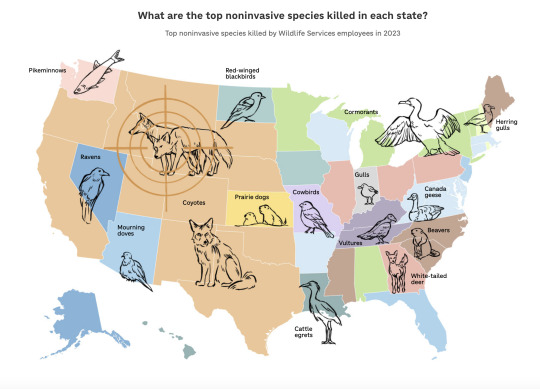
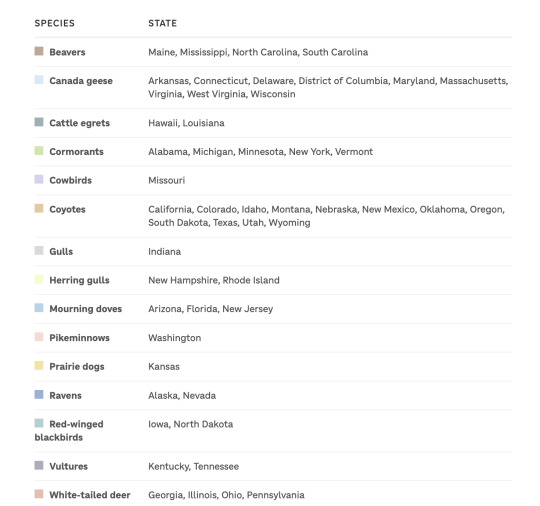

Excerpt from this story from NPR:
The United States Department of Agriculture's [USDA’s] Wildlife Services program is a holdover from the 1930s, when Congress gave the federal government broad authority to kill wildlife at the request of private landowners. In that era, government-sponsored extermination programs for native wild animals, like wolves and grizzly bears, were common.
After the Endangered Species Act was passed in 1973, federal agencies were required to change course and start helping some of those wild animal populations recover. But today, Wildlife Services employees still kill hundreds of thousands of noninvasive animals a year, data from the agency shows. Even species considered threatened under the Endangered Species Act, like grizzly bears, are not exempt. So long as livestock or human life are threatened, federal rules allow Wildlife Services to kill those animals, too.
Conservationist groups have long protested the program, saying the government is killing animals at the request of private livestock owners without first presenting enough evidence to show that the management methods aren’t harming the environment, as federal law requires.
“One of the biggest issues that comes up with Wildlife Services, and where we've beaten them in court multiple times in multiple states, is the controversy of the science,” said Lizzy Pennock, an attorney for the nonprofit WildEarth Guardians. “We need to get out of the framework of the 1800s and 1900s where it's like, kill any carnivores that might be inconvenient.”
Wildlife Services officials say that with the exception of invasive species, employees only kill wild animals that attack livestock or cause damage. But data obtained by NPR indicates the program often kills native wildlife that didn’t kill or injure livestock.
NPR obtained and digitized thousands of Wildlife Services work orders from Montana, created from 2019 through 2022, and built a database that shows that the program’s employees frequently kill native wild animals without evidence of livestock loss. The documents reveal that during those three years, employees killed approximately 11,000 wild animals on Montana properties where no wildlife was recorded as responsible for killing or injuring any livestock. In those cases, only a "threat" from those wild animals was logged in the records.
The agency frequently used helicopters and planes to shoot large numbers of wild animals at a time, the documents show, a method activists consider cruel and scientists say can lead to local eradications.
Although some livestock organizations financially support part of Wildlife Services' work, individual livestock owners do not pay a fee when federal employees come to their properties. Employees are allowed to kill wild animals on those private areas as well as on public land, like state forests and parks.
“That’s a bloodbath,” said Collette Adkins, a lawyer who leads the Carnivore Conservation program at the Center for Biological Diversity. “That just seems like yahoos with rifles killing everything they see that moves. It’s horrible to imagine the amount of suffering involved there.”
“Of all wildlife encountered in FY 2023, Wildlife Services lethally removed 5.14%, or approximately 1.45 million, from areas where damage was occurring. Invasive species accounted for 74.2% (1,079,279) of the wildlife lethally removed,” a representative wrote.
An NPR analysis of those reports shows that Wildlife Services killed more than 370,000 noninvasive animals across the country in the 2023 fiscal year. And over the past nine years, Wildlife Services killed 30 threatened grizzly bears and at least 1,500 gray wolves in states where they were otherwise supposed to receive protection under the Endangered Species Act, like in Minnesota and Wisconsin.
But the reports don’t reveal the names of the livestock owners that use Wildlife Services. That’s to protect the privacy of people in the agriculture industry, the agency has said. Wildlife Services also doesn’t disclose in those reports how many wild animals were killed by federal employees on public land.
20 notes
·
View notes
Note
hey starbs,
as a person who struggles with chronic depression and severe anxiety, I cannot imagine the extra stress of everything you go through. I honestly feel terrible for what's going on. I get what it's like for things to feel very stressful and not having your time occupied can send these anxious thoughts.
Is el nino to blame for the floods? I've heard that natural weather phenomon can cause terrible storms.
I dont trust the random news sources, is there a website or somewhere I can go to just see what is going on, i want to be able to, not understand but just.. you have so much going on starbs' i'm so so sorry, I don't have funds to donate or anything but i will spread awareness the best I can.
my whole family now knows about the flooding People spreading the news who may be abe to donate.
stay safe the best you can and blessing to you and everyone you love.
please do not apologize, and thank you very much for taking some time to write me this, for helping spread awareness, and i appreciate the fact you shared the news with your family and maybe even did some research on the topic. i truly hope for things to get better soon.
i have no place in complaining about the situation, because i'm still safe, with my house intact.
here are some good news: i saw HUNDREDS OF MANY (like. mountains of it) sacks with food and supplies in them for people in the public shelters earlier today on tv!
now from what i see, some websites are not updated or might spread misinformation (i heard they blamed the people for building their houses near the rivers. istg)
about the floods, i do believe there were many different reasons behind it, that added up, resulted in this disaster.
[BEFORE ANYTHING. i don't consider this post or my own words a reliable source of information. not even the people who live here know what is currently going on, or what's gonna happen next. i'm sharing what i've been told, and have reasons to believe it's the truth]
the main reason is, as you may know, global warming, which is very self-explanatory. el niño (rain) has already happened, and el niña (drought) was supposed to take its place.
the second reason is because of negligence from the state's government. from what i remember, there were systems to drain the water in Porto Alegre that were left without maintenance and only now they're being activated.
it's absolutely not the fault of the people who built their houses there. just so you have a vision of it: Rio Grande's city hall building is located in a point were the water has easily reached it within a few hours. like ??? oh so they did not saw that coming ?? are they that dumb?? it's literally a seaport city...
the third reason is more environmental. the most affected city (Guaíba) is found inside a drainage basin (meaning that the rivers flow to the lowest area and meet in certain points, causing them to overflow altogether when it rains too much).
39 notes
·
View notes
Text
You know I'm generally against constructing more elaborate industrial systems and infrastructure, except that we're going to need it because population is going up so much, but if we built a national grid of potable water pipeline, we would never have a drought again. Whenever one place is in a drought another place is experiencing flooding and we could compensate for all of this. No it's not as good as just not building in flooding areas and not ruining the ecology of other areas with agriculture and stuff, but it would definitely help us manage the situation, which we're kind of stuck with at this point.
Plus this would prevent exploitation by moneyed interests like factory agriculture from monopolizing the local water supply. Also (I've been ruminating about this for a long time) maybe we could couple this with some kind of national advertising campaign to shift public opinion on bottled water and get people to stop using single-use plastics all the damn time for stuff that comes out of the tap for a nickel per 100 gallons. If everybody had their own stainless water bottle and used it all the time and there were little cleaning stations everywhere where you could clean them out conveniently, would this be good? I'm not sure on balance; I don't know how to do that math.
7 notes
·
View notes
Text
Submitted via Google Form:
It would sound fun if my world was full of man made lakes so that pretty much all the roads are actually waterways. However I'm wondering where all the water and ground is from and how they create all that? Basically I just want to see the world full of boats instead of cars getting from place to place. I don't mean like single tiny cities like Venice that only works because it's on a lagoon but across the entire world basically. Large busy cities everywhere where the main transportation are boats.
Tex: How big are your lakes? Can anything get bigger than that? We have oodles of lakes on earth, but also significantly larger seas and oceans due to plate tectonics. Is it important to you that the only bodies of waters are lakes across the entirety of the planet, or will a continent or two suffice for the purposes of your worldbuilding? It’s certainly feasible to have your major transportation be via boats, but they will also be heavily dependent upon a consistent amount of water in their area, which will vary based on season and periodic droughts and floods.
Utuabzu: Historically, canals are pretty common. A lot more so than many assume. Prior to the widespread adoption of the steam locomotive and railroads, the most efficient way to transport goods and people in bulk was by water, which is why older cities in Europe and many other places are often criss-crossed by canals, or once were. Even early industrial cities like Birmingham were heavily reliant on canals for bulk transport.
These canals weren’t just intra-city affairs either. The 17th Century Canal du Midi forms a complex with some other waterways that allows boat traffic across France from the Mediterranean to the Atlantic, while the Grand Canal in China is a system stretching over 1700km, with the oldest segments built in the 5th Century BCE, and the system considered to have been completed in 609CE. It is still in use as a major piece of transportation infrastructure.
Canals often also served multiple purposes, such as the canals of Bangkok which also served to drain the swampy marshland the city was built on and irrigate farmland, or the Sanitary and Ship Canal in Chicago, which reversed the flow of the lower Chicago River so that it flowed into the Mississippi river system rather than Lake Michigan, allowing shipping to pass directly between the Mississippi river system and the Great Lakes, and diverting the city’s sewerage away from the lake, where it sourced its drinking water.
Prior to the mid-late 19th Century, most urban areas with suitable geography would fill your needs. The major obstacle is going to be that canals just aren’t very practical in hilly or mountainous terrain, or in desert environments with low precipitation and high evaporation. Both can be worked around - uneven terrain can be traversed with the use of locks, and deserts with either sufficiently high water inflow or by roofing the canal over or building it more like a qanat - but there does need to be a good reason for people to bother doing so. At a certain point it becomes much more cost/effort effective to simply walk.
So, unless your world is fairly flat and pretty damp - or the parts of it relevant to your story at least - there’s going to be places where canals don’t really make sense as transportation infrastructure. But hey, now you’ve got an obstacle you can throw at your characters, so it’s not all bad.
Addy: Is the world heavily aquatic and close to sea level? If not, what advantage is there to using boats? Canals are very expensive to build and offer few benefits for everyday travel (trade is a different story, just look at the Erie Canal). I understand that you’re going for an aesthetic, and you can absolutely do that, but what’s the equivalent of a bus? And boats are fairly slow, being real. Cars also aren’t mandatory, either - plenty of cities are walkable.
Just something to think about.
6 notes
·
View notes
Text












Have spent the last few days diving back into playing the early access version of Timberborn. I played the same map twice, once with the default Folktails beavers, and a second time with the unlockable Iron Teeth beavers, whom I'd already unlocked the last time I was playing this game a lot.
The first playthrough was mostly re-learning how to play, as it's been a while (almost a year) since I last opened the game, and I barely played it that time.
There was the usual working through the tutorial to build the minimum stuff you need to survive and start building, and then I built. A lot. A lot a lot. My usual goal when playing a map is to get as much of it as I can green (watered) , and in this case I also wanted to build all-or-most of the items in the technology tree. At least of the non-decorative objects.
There's a lot of water management, in order to get water to places that it currently isn't (including getting it somewhere uphill). Complicated by the most recent addition to the game, badwater, which is full of toxic contamination (needed to produce explosives). There were two rivers on this map, starting in opposite corners. One of good water that runs down a large mountain and then across to the far side of the map, the main river my settlement is sited on. And then on top of a smaller mountain there's two badwater sources fuelling a river that runs along the side of the map, in the opposite direction of flow as the main river, and then floods a big chunk of one corner of the map before draining away. Also, for added entertainment, there's intermittent droughts, plus "badtides" where the main river briefly turns into badwater too. And you really don't want toxic sludge running through your city, poisoning your citizens and killing their crops! Thankfully you can build levees, dams, and floodgates to control the flow.




The Iron Teeth playthrough was interesting, as they have an almost entirely different technology tree than the Folktails, right down to having different crops (carrots vs kohlrabi, as the starter point). And it's not just a one-to-one re-skinning of buildings; they often have different buildings, and even things that are similar largely have entirely different meshes or level of function. Iron Teeth pumps can pump up higher distances by default, for example. Folktails can build windmills in addition to using water- or beaver-power. Iron Teeth have hydroponic gardens to grow mushrooms and algae. They ferment a lot of their foods before eating them, or process them into rations, while the Folktails prefer grilling, grinding, and baking. Folktails have aquatic farms that can plant cattails and spadderdock in the water; Iron Teeth use foresters to plan mangroves. But they can't plant maple trees and harvest maple syrup from them, as Folktails can.
One thing I like a lot about the game is that there's a lot of structures that count as "solid" and can be stacked. Like housing and warehouses, though "piles" aren't stackable for Folktails, but are covered, stackable structures for Iron Teeth. I basically built a big stack of housing and storage in a central area for my Iron Teeth; it's a nice solution to dealing with limited map space.




As a fan of city-building games where your only potential conflict is versus the environment, I highly recommend this one. It was already enjoyable when I first purchased early access a couple years ago, and it's definitely gotten better since. I'm probably going to go wild with it for a week or three once it officially releases.
5 notes
·
View notes
Text
Because I'm trying to halt the urge to post my not quite 500 words beginning of my story for the Inklings Challenge this year, at least not until I have a bit more finished. I'm posting the figuring that has helped me get to the point I am at. While letting me procrastinate on actually writing it at the moment. (Though I still might end up posting the first part before the rest is written...)
🌺💐🌻🌼🌷🌹🪻
This was what I came up with the first year of the challenge.
Technology: Stories exploring how a particular technological advance could affect people right here on current or future Earth
*Some one has come up with a device to control weather and it’s become a political bargaining tool which has lead to some serious problems
People have always joked about how great it would be if we could send weather where we want it to be. We could eliminate flooding and droughts. Or at least that’s what we thought would happen. There’s that little issue of bureaucratic red tape that causes more problems than helps.
Welcome to your new world. A world where weather can be controlled. A world where natural disasters due to storms can be eliminated. One where flooding and droughts are of a bygone era. All is possible with the Vector Climate Control System (V.C.C.S.). The system consists of 63 towers set in seven circuits of nine across the world. Making it possible to move weather from one side of the world to the other when needed. If one place is getting too much rain and another not enough, the rain can be pushed to where it’s needed inside its circuit zone.
🌺💐🌻🌼🌷🌹🪻
And this is all for this year. Minus a part that I had previously posted. But that wasn't solely focused on this story.
Weather control system that failed. Why is a group traveling to one of the control towers? Who is in this group? Why is it important to them?
Weather station that should have been shut down, randomly is having issues.
Many years ago, before I was born, before my parents were even born, there was a world wide collective project that was supposed to change everything. It was supposed to stop global warming and give greater stability to people world wide. On each of the seven continents were built nine tall towers. Within each of these towers was the technology to supposedly change the weather.
Jake the red haired, freckle faced, tinkerer who journeys to one of the control towers when the weather starts to act funny. (Has girlfriend?wife?fiancé? Delilah? who comes with him.) No giants in this story, just giant towers and odd weather phenomenon.
Starts with just Jake and wife, pick up others along the way who have different skills but have also noticed something wrong with the weather.
Hey there Delilah joke?
#midnight musing#but it's not midnight#inklings challenge#inklingschallenge#inklings musings#inkling challenge#musing on the inklings challenge#the eagle and child#team chesterton#the theme still hasn't revealed itself to me yet so I'm going to say prayer and genre is earth travel though I haven't gotten to the travel#there have definitely been some changes made to these concepts
1 note
·
View note
Text
Connection to Site & Collection of Water
Lake Samsonvale is a reservoir that supplies water to Brisbane and its surroundings, but it also offers recreational activities such as fishing, boating, and picnicking. I appreciate the balance between nature and human needs that the lake represents.
The lake was a lively place, with various forms of life interacting with each other. A fisherman stood on the shore, casting his line into the water and hoping for a catch. A pelican perched nearby, eyeing the fisherman's bucket and waiting for an opportunity to snatch a fish. The water was rich in nutrients, which supported the growth of algae in the shallow areas. The algae formed a green layer on the water's surface, obscuring the view of the bottom. This made it slightly difficult to collect some clear water samples, so I looked for a spot where the algae was less dense and scooped up some water with a bottle.
One of the things that I like to think about when I'm at the lake is how it was formed. The lake was created in 1976 by damming the North Pine River, which flows from the D'Aguilar Range. The dam was built to prevent flooding and to provide water security for the growing population of Brisbane. The construction of the dam had a significant impact on the environment and the people who lived in the area. Many farms, homes, and historical sites were submerged or relocated, and some wildlife habitats were lost or altered. The lake also changed the flow and quality of the river downstream, affecting the ecosystems and communities that depend on it.
How did the people who were affected by the dam feel about losing their land and their history? How did they adapt to the new situation, and what challenges did they face? I question how they view the lake today, whether they see it as a source of benefit or a reminder of loss. How they balance their needs and values with those of others who use the lake for different purposes.
How will the lake change in the future as climate change and population growth put more pressure on water resources? How will the lake cope with droughts, floods, pollution, and invasive species? How will the management of the lake evolve to address these issues and ensure its sustainability? How will the lake continue to provide water, recreation, and beauty for generations to come?
LAKE SAMSONVALE
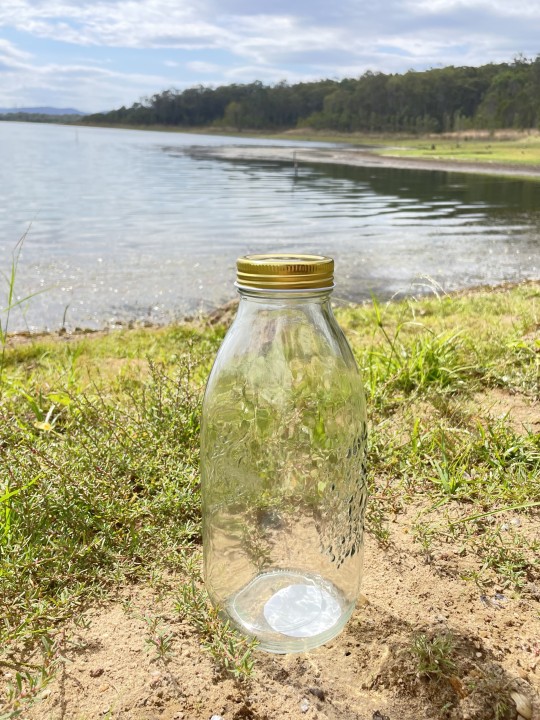


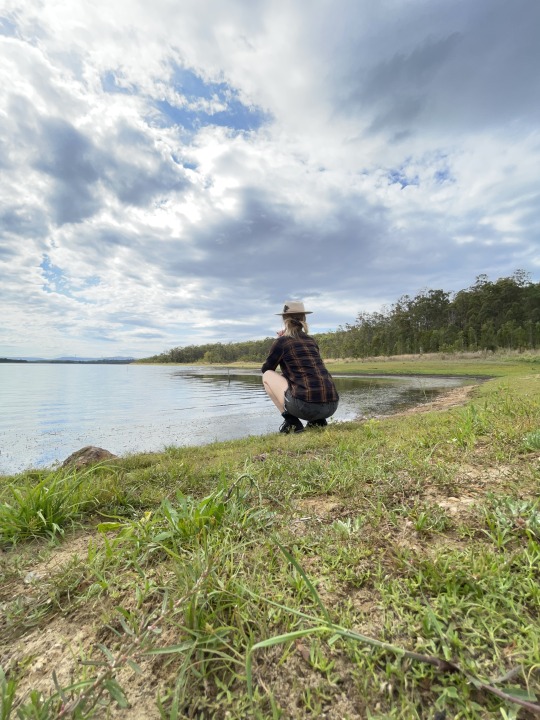

0 notes
Text
Anonymous
Slow down, that was the cry that was the protest, grass roots, that was occupy, that was truth, that was blackblock, anti what was happening, for speech for privacy for currency, a cry for things to be more decentralized, less predatory.. more protection from the cooperate world, consumer saftey, they got attacked by hive mentality, what anonymous tried to warn everyone is that u can't trust technology, u can't trust the internet, it's vulnerable, it can be controlled to easily, nothing secure about it.. just asking for trouble.. that's like the story of Noah, there's always a flood coming, eventually there's gonna be a disease, or a virus, or a drought, or a weapon of war, there's always something coming, trust in yourselves.. weather the flood came or not,, Noah built a peace of mind.. everyone else laughed, and they called him crazy, they isolated him, but what where they doing,, sinning,, while he was busy building.. perhaps why Noah survived..
Lol effin millenial.. why not, just a mix of time.. with alot of distractions floating around to surface, what's wild is I've been thinking about what's happening now for the last 15 years.. I'm not afraid of it.. I did not knee to it, still free uncomfortable and smiling, still me.. still moon walking lol
1 note
·
View note
Text
'"Extant didn’t survive the collapse, it’s one of the cities that sprung up because of it. When wildfires raged, and flooding washed out whole swaths of land, and drought hit the rest, when it was one super weather event after another, this was one of the few places left that seemed safe. Not a paradise by any stretch, but tolerable for human life. And now it’s been built up into this shining neon jewel of civilization. A testament to humanity’s sheer tenacity in the face of extinction. They call Extant a success. They say the city is thriving; the population has swelled with millions of people crowded into towering skyscrapers and arcologies. At forty-eight storeys up, it sure is easy to believe that. Giant swaths of neon lights illuminate each of these monuments to success to show everyone that there’s enough resources to waste lighting up the night sky. People no longer have to make do with the bare minimum. Or so you’d assume. From this high up, everything you see is an illusion — and it’s almost peaceful."
This July, I'm participating in Camp Nanowrimo, and I'm posting my story in progress to a Google doc as I go along. Follow the link and check out what I've been cooking up. It's a cyberpunk noir thriller in two parts (although, this is just the draft for part one). If you enjoy what you're reading, I'd appreciate it if you could throw a couple bucks my way at my ko-fi page.
#cyberpunk noir#cyberpunk#writing#amwriting#my writing#cyberpunk storytime#camp nano july 2021#camp nanowrimo#nanowrimo#camp nano april 2021
18 notes
·
View notes
Text
There's a growing defense to reintroduce them in England at the moment and it's doing marvellous things…
https://www.bbc.co.uk/news/uk-england-cornwall-61826745
Tumblr app is jumping text around so I'm just gonna hit post. Beavers are cool
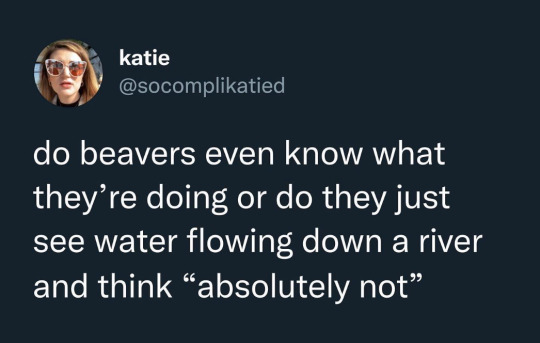
254K notes
·
View notes
Text
APPEAL TO WORLD SCIENTISTS...
I'm an unfortunate Indian scientist, born in a poor&oppressed community. Government didn't encourage and provide research opportunities to me. When asked for research opportunities, I was ridiculed, abused and beaten. Eventually I built a small lab in my house and conducted over a 1000 researches&studies on the earth related issues.
Among them Bio-forecast, Numerical Weather Periodical Tables, Irlapatism- A New Hypothetical Model Cosmology, National Geoscope Projects, Global Monsoon Time Scales, Indian Monsoon Tiime Scale etc. were successfully proved out in practice.
Through these, climate changes, heavy rains and floods, droughts and famines cyclones and depressions and natural calamities and weather disasters, earthquakes, celestial mysteries influencing the earth's atmosphere can be discovered. Kindly find&print out them from Google by searching my name GANGADHARA RAO IRLAPATI or can obtain by WhatsApp/me your email. I will send you the full details of my researches I did. Maybe they will useful for your research.Kindly make further research and develop them. I will send the physical monsoon time scales by post if you request. This is because it is better to examine the monsoon time scales physically than to examine the monsoon time scale online.
Artificial rains, Artificial storms, Artificial underground waters, Invention of life, Re-creation of humans of past, Time-machine, Geo-machine, Earth-machine, Journey into the atom through microcosm, Journey into the outer space-universe worlds through macrocosm, etc research concepts were uncompleted research projects. I have prepared the necessary research basics and technology proposals for these researches but uncompleted due to lack of support&opportunities. I call on world scientists to do researches on these research projects.
However much scientific research efforts did tho, I couldn't get recognition and my investigations were ignored&darkened. My scientific thoughts were infuriated the upper communities and fanatic people. As a result, I was tortured, suffered trials and imprisoned. I am a victim of racism and discrimination and negligence and intolerance. I am now making my life's last journey with disregard&despair and serious illness&poverty issues. I have no money even to buy regular medicines and no food to eat and no fabrics to put on. It is not known how long I will live or when I will die.
Kindly recognize me by making reference in research papers,postings on socialmedia, discussing in conferences, forums and other events. If world scientists have invented any technology in future that re-create humans of past, Kindly remember&re-create me to complete my uncompleted goals together with world scientists". Because there are so many goals to be invented but the life is running out. It is not known how long I will live, or when I will die. But the time is near.
GANGADHARA RAO IRLAPATI
Email:[email protected]
GooglePay A/C No:9989239159
WhatsApp No: 630 557 1833

0 notes
Text
'The ban on washing cars with tap water was just a foretaste'
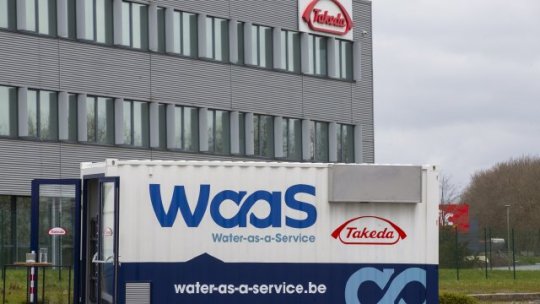
Pieter Loose stood on the highest Alpine peaks, built a bamboo village in Brazil and took part in the World Rafting Championships in Bosnia. Now he shows off his water technology company Ekopak on the Brussels stock exchange. “Let us also try to become world champions in water recycling.”
Pieter Loose pulls his leg as he receives us. A muscle tear in the calf, the result of an hour of padel. These will be difficult weeks for the man in his thirties, without sports. "I'm a bit hyperkinetic. I need sports to recharge.'” He usually does that on the mountain bike. He covers 10,000 kilometres every year, with tours in Patagonia, Africa, Greece, the Dolomites. And sometimes rides of 5,000 altimeters per day. Suffering. “But for me this is pure holiday: crawling on my bike in the morning and just follow the GPS.”
Loose talks rather quietly and monotonously. Yet he is brimming with enthusiasm. "I've always had a big mouth and I've always been ambitious. But I never dared to think that my company would ever be listed on the stock exchange.” At the end of March, his water treatment company Ekopak[1], supported by main shareholder Marc Coucke, raised 50 million euros and it is now worth about 240 million euros. It is the temporary highlight in Loose's course. With Ekopak, he surfs along with water recycling technology on the realization that we are depleting our water reserves.
He paid "a few millions" for Ekopak. “It was a small, local company at the time, with a lot of knowledge. I put more ambition into it. The ball is rolling now. My dreams become reality. That gives me power.”
The company has been building container installations for many years to produce ultrapure water for chemical, pharmaceutical, textile and food companies, among others. “Compare it to a descaler for the city water in your home, to protect your taps. But we go much further." “For customers who produce high-pressure steam, the entire Mendeleev table has to be removed, otherwise those elements will affect the steam boilers,” explains Loose. “Every customer requires a different degree of purity. For cooling water, water to clean machines, water for chemical processes.”
While until recently Ekopak treated groundwater and drinking water, today - after thorough research - it starts from waste water at the companies themselves. “A technical challenge, but future-proof,” says Loose. In addition, he launched the WAAS (Water-as-a-Service) concept, whereby Ekopak not only builds installations, but also finances and operates them and invoices the customer per drop of water. This should result in unprecedented revenue and profit growth in the coming years. “We have turned a sustainable product into a sustainable business model.”
What is the driving force behind Ekopak's growth?
Loose: "Long ago, investments were made in a network to provide everyone with clean drinking water. Industrial companies have joined the same network. That was the most obvious solution. But the situation has become completely out of balance: factories today use billions of liters of drinking water per hour. This used water is subsequently treated in a biological water treatment plant to be discharged into streams and rivers. It flows to the sea and you lose it. Consequently we have to install desalination plants at the sea side that consume a lot of energy to pump the water inland again. That is not future-proof, and companies are increasingly interested in that.”
How serious are companies about this?
Loose: “Twenty years ago you had Greenpeace with a slogan like 'better a hole in my T-shirt than a hole in the ozone layer”. But that's where it stopped. Now a tipping point has been reached. Companies set themselves concrete targets for energy, CO2 and water use. This is important to attract investors, subsidies and staff. The dominoes are falling, and that's a good thing. Climate change is real.” “The water supply is under pressure. Companies are not only afraid of a blackout, but also of a blue out. We've already had a foretaste of bans on using tap water to wash cars and fill swimming pools, and bans for farmers on pumping water from streams and rivers in certain regions. Water has a value like oil. We never thought about that. But the awareness that there are limits is growing at a rapid pace. We feel that. We keeps us occupied.”
How bad is the water scarcity in Flanders?
Loose: "Very. There is plenty of rain, but because it is a densely populated and paved area, the rain disappears into the sewers instead of seeping into the ground. Moreover, we have an economy with water-intensive sectors: food, textiles, pharmaceuticals, chemicals. In the OECD ranking, we are at the very bottom for the amount of water available per person, behind southern countries such as Spain and Italy. That also offers opportunities. We are forced to find a solution: Belgium will educate the world when it comes to rational use of water. That creates companies like Ekopak. We also intend to score internationally with that knowledge.”
Is the industry the main culprit?
Loose: "I'm not saying that. There is also agriculture. And in families at home, only 10 percent of drinking water is used for drinking. We still flush our toilets en masse with drinking water instead of rainwater. But our focus is on industry, which uses a quarter of drinking water in the northern region of Belgium. If we could reduce that, we are taking a big step forward.”
What is the role of politics in the water problem?
Loose: “Everyone is aware of the issues. The Blue Deal of Flanders[2] proving it. Money is earmarked for buffer basins and more wet nature, or for reductions in leakage losses, and so on. Mandatory water audits are introduced at companies and linked to environmental and expansion permits and subsidies. It is being examined whether companies can inject any surplus of recycled drinking water into the network against payment. It wouldn't surprise me either that there will be a limit on applications for which you can use drinking water or groundwater in industry, comparable to measures for your swimming pool.”
How important is the IPO in the growth plan?
Loose: 'It is crucial to roll out the Water-as-a-Service strategy. We will not only build the small water factories at the customers' premises, but will also operate and pre-finance them. This requires money: from 100,000 to 10 million euros per installation, depending on the flow rate and quality. We invoice per drop for a period of ten years or longer. We decrease the customer’s worries. And while tap water is becoming more and more expensive, our price is 20 to 40 percent lower. We therefore also strengthen their competitiveness. That makes companies bend in our direction more quickly. In this way we can tackle the water problem at an accelerated pace.” “The IPO also generates more than just money. It gives you more body when negotiating long-term contracts with multinationals. We are now approaching them as a listed company, no longer as 'that SME from Tielt with a skilled CEO'.'
Do you already have customers for that new concept?
Loose: “Eight projects are up and running, among others at the chemical companies Eastman[3], the copper film producer Circuitfoil[4] in Luxembourg and the vegetable processor Darta[5]. An installation has been started up at the pharmaceutical company Takeda[6] in Lessines to reuse 600 million litres of waste water. That's the equivalent of 18,000 people's water use, which means all of Lessen. We actually connect an entire city to the water network in one go. I also see many small and good initiatives, such as trucks collecting construction site water. But what we realize is of a different order. We are going fast, and sustainability knows no bounds. We also go abroad. Takeda wants to roll out our technology in its factories worldwide.”
You have now lost control of Ekopak. Is that difficult?
Loose: "The opportunity we now have to move forward gives me more satisfaction than the idea of being one hundred percent owner of a small company from which you are not getting the most out of it."
Source
JAN DE SCHAMPHELAERE, Ekopak-topman Pieter Loose: 'Het verbod om auto's te wassen met leidingwater was slechts een voorsmaakje' in: De Tijd, 24-07-2021,
https://www.tijd.be/ondernemen/technologie/ekopak-topman-pieter-loose-het-verbod-om-auto-s-te-wassen-met-leidingwater-was-slechts-een-voorsmaakje/10321369.html
[1] https://ekopak.be/en/sustainability/ [2] With the Blue Deal, the Government of Flanders is increasing its efforts in the fight against water scarcity and drought. With this deal, it wants to tackle the drought problem in a structural way, with an increased deployment of resources and the correct instruments, with the involvement of industry and farmers as part of the solution and with a clear exemplary role for the Flemish regional and other governments in Belgium. The Flemish Decree on Integrated Water Policy is officially approved in July 2003 (Belgium Law Gazette, 14.11.03). This decree is the juridical implementation of the European Water Framework Directive and the Floods Directive in Flemish law. https://www.integraalwaterbeleid.be/en [3] Founded in 1920, Eastman is a global specialty materials company that produces a broad range of products found in items people use every day. With the purpose of enhancing the quality of life in a material way, Eastman works with customers to deliver innovative products and solutions while maintaining a commitment to safety and sustainability. The company's innovation-driven growth model takes advantage of world-class technology platforms, deep customer engagement, and differentiated application development to grow its leading positions in attractive end-markets such as transportation, building and construction, and consumables. As a globally inclusive and diverse company, Eastman employs approximately 14,500 people around the world and serves customers in more than 100 countries. The company had 2020 revenues of approximately $8.5 billion and is headquartered in Kingsport, Tennessee, USA. The chemical company has 2 plants in the Ghent harbor in Belgium. https://www.eastman.com/pages/home.aspx. [4] Circuitfoil develops; Produces and markets high-quality copper foil, while constantly ensuring a safe and healthy environment in its plants, processes and products. rom its corporate headquarters in Luxembourg, Europe, the company distributes and markets its large range of products through a wide network of service centers and sales companies to customers worldwide. https://www.circuitfoil.com/company/profile/ [5] d’Arta is a Belgian family company founded in 1988 that has grown into a global player in the development, processing and commercialisation of fresh frozen products such as vegetables, fruits, herbs and ready-made (side) dishes. It employs more than 900 people and export our products to more than 100 countries. https://www.darta.com/en [6] Takeda is one of the 10 largest pharmaceutical companies in Belgium. Takeda’s presence in Belgium is reinforced by its global manufacturing site in Lessines. This Takeda site has over 18,000 m² of building surface and operates 24 hours per day, 7 days per week. It is a flexible plant for purification and a packaging center for immunology and hematology products, covering a total geographical span of over 80 countries worldwide. In total, more than 1000 professionals work for Takeda in Belgium, making us a top 5 employer in the pharmaceutical industry. https://www.takeda.com/en-be/who-we-are/contact-us/
1 note
·
View note